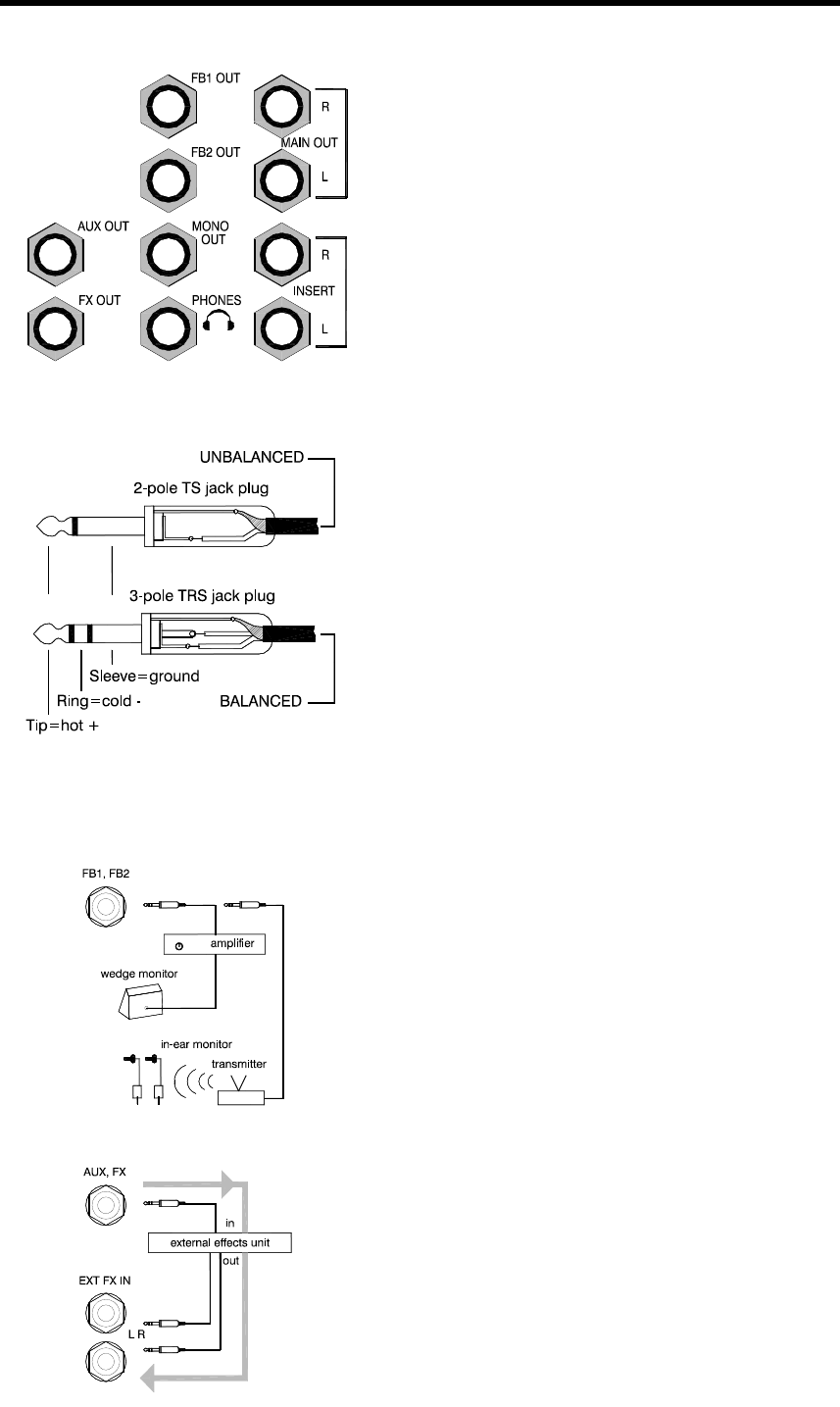User guide

28 PA-CP User Guide
The MASTER Connectors
TRS Line Outputs ¼” jack line level outputs which
produce 0dBu when the console meters read ‘0’. With a
maximum output level of +21dBu there is plenty of headroom
available. They are impedance balanced and can be used with
balanced or unbalanced equipment.
TRS jack refers to the popular 3-pole stereo ¼” phone
jack. It is so called because it has three contacts: tip, ring and
sleeve. It is used with balanced audio signals (tip hot, ring
cold), stereo signals (tip left, ring right), or single jack inserts
(tip send, ring return). The 2-pole mono TS jack is used with
unbalanced signals.
Line level refers to audio signals in the region of 1 volt.
For comparison, Mic level refers to very low level signals in the
order of millivolts, and Speaker level refers to amplifier output
levels in the order of tens of volts. Several line level standards
exist. These refer to the ‘nominal’ operating level, the point at
which the meters read ‘0’. Professional audio equipment
generally works at 0dBu (0.775V) or +4dBu (1.23V), while
semi-professional or consumer equipment often works at the
lower -10dBV (0.31V). The PA Series has a very wide dynamic
range making its 0dBu referenced outputs well suited to
working with these standards.
☺ Using line level signals Use these outputs to feed line
level equipment such as amplifier, signal processor, recorder
and IEM transmitter inputs. Do not connect them directly to
loudspeakers, or to phantom powered inputs. Adjust the
sensitivity of the connected equipment to match the normal
0dBu operating level of the console.
Impedance balanced outputs, like differential
electronic balanced drivers, use a 3 wire connection and
provide the benefit of interference rejection when plugged into
balanced equipment inputs. The signal is carried on the tip
and is referenced to ground on the sleeve. Unlike the
electronically balanced connection, the ring does not carry
signal. However, it is held at the same impedance as the tip
signal wire. This means that interference is injected equally
into both the tip and ring wires and cancels out when plugged
into a balanced input leaving the audio signal unaffected.
☺ Using balanced or unbalanced connections Use
balanced 2-core plus screen connections when you connect
the outputs to balanced equipment with cables longer than 10
meters. The PA Series outputs work at line voltage and very
low impedance making unbalanced single core plus screen
connections suitable for short cable runs as these are seldom
prone to interference. To reduce interference pickup avoid
running the cables near to or alongside mains power, lighting
or computer equipment and cables.
FB1, FB2 OUT Use these pre-fade aux sends to drive
two independent foldback monitor amplifiers, or transmitters if
you are using in-ear monitors (IEM).
AUX Use this post-fade aux send to drive an external effects
unit, or for a special feed such as mono recording, audio for
video feed or additional speaker zone.
FX This output follows the channel post-fade sends to the
internal effects unit. Use it when you are not using the internal
effects unit, or to feed an external effects unit at the same time
for layered effects.










